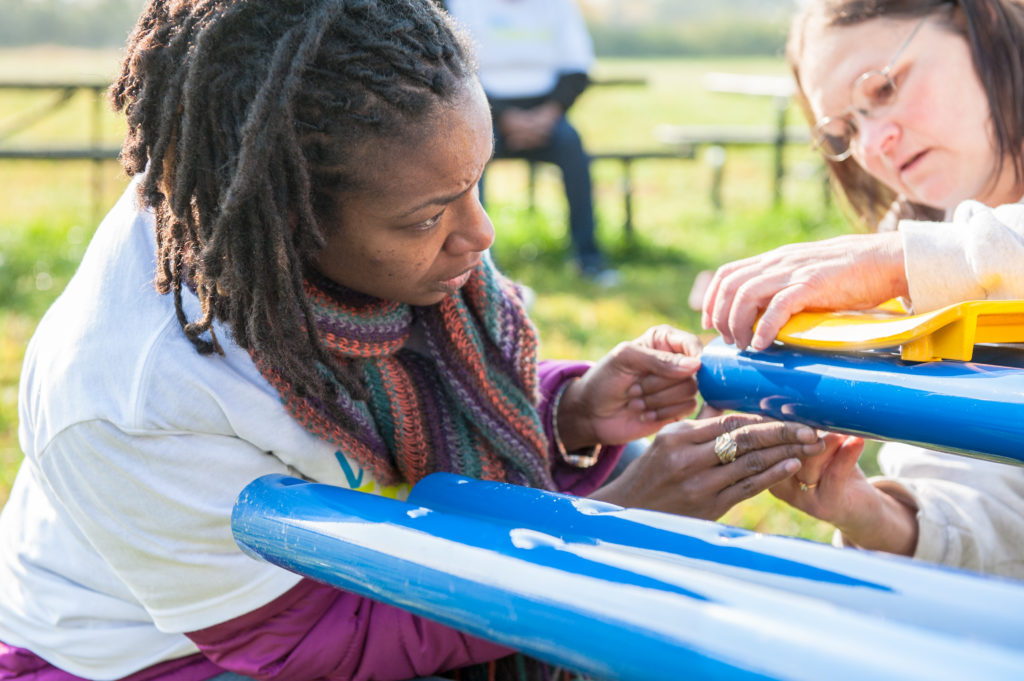

What You Need to Know
These key issues are essential to understanding how we can support thriving people and places.
Measurement, Learning, & Evaluation: Charting Progress
- Whole-person, whole-community outcome measures are designed to depict how people feel about their own lives, their own communities, and their social conditions.
- A system can only achieve equitable outcomes if equity-in-process is part of its DNA. Community members and people with lived experience must be able to exert stewardship and control over their own information.
- It is important to choose measures that catalyze cross-sector collaboration and show the contribution of these sectors to overall health and well-being.


Historical Context
THE RAPID SPREAD AND HIGH MORTALITY OF COVID-19 AMONG POPULATIONS WITH HIGH LEVELS OF SOCIAL VULNERABILITY have shined a spotlight on the inequities of our current system’s inequities.
As we prepare to emerge from the initial peak of the pandemic, it is paramount that we set up systems to promote better and more equitable outcomes in health and wellbeing.
We will work to make sure what we’re learning across the chapters of the Springboard are considered for inclusion into our national measurement processes–and to advance the federal data strategy around equitable data, infrastructure, and investment with a focus in communities that need it the most.”
Dr. Somava Saha, Well Being (WE) & Equity in the World

Current Conditions
We must develop a comprehensive measurement strategy to drive collaborative improvement in population health and well-being by:
- Recognizing the ways in which multiple factors and sectors interact
- Implementing a balance of measures that relate to thriving people, thriving communities, and the systems that create racial and other inequities
- Evaluating measures using an equity lens that includes race/ethnicity, place, age, gender, sexual identity, language spoken at home, and wealth
- Employing community-oriented tools that can assess deeper system transformation
It is important to create “learning measurement systems” that encompass all collaborating sectors and are designed to reflect the lived experiences of inequality. These learning measurement systems need to harmonize data, facilitate smooth information sharing, and synchronize with one another.

“To drive collaborative improvement in population health and well-being, measures must cross sectors; address economic and social determinants of health, well-being, and equity; and improve the health and well-being of people and of places.”
Somava Saha & Colleagues

Pivotal Moves
A Selection of Ideas for Changing Course
PIVOTAL MOVES are decisive actions that could begin now and change the course of community life relatively quickly.
We have been learning at an unparalleled pace in the context of the COVID-19 pandemic. The crisis has led to massive shifts in public health, health care, the economy, modes of social connection, and mental health. To support resilience, communities and organizations need to develop an equitable measurement process and data infrastructure—and consider specific measures for thriving, struggling, and suffering. We recommend:
COMMON MEASURES
Communities need to identify a small set of common measures to assess overall outcomes.
BALANCED MEASURES
It is important to include subjective measures, like people-reported outcome measures to assess thriving, struggling and suffering, as well as objective measures, such as years of life lost or gained.
EQUITABLE PROCESS
Communities must identify measures that matter—and measures that relate to the context of their communities. This means that data has to be available at the community level (subcounty, ideally neighborhood).
ASSESSMENT PROCESS
Communities need a method for assessing their own journey in equitable transformation.
DATA INFRASTRUCTURE
An equitable data infrastructure must be developed in a way that is accessible to community residents, connected and interoperable across sectors, and equitably governed.
Learn more about the 40 measures recommended for equitable recovery and resilience in the Deep Dive.
DATA IN ACTION
- Identifying homeless clients with a positive COVID-19 diagnosis to limit contact and promote safe isolation practices
- Informing shelter workers of a positive COVID-19 diagnosis so that they can take appropriate precautions